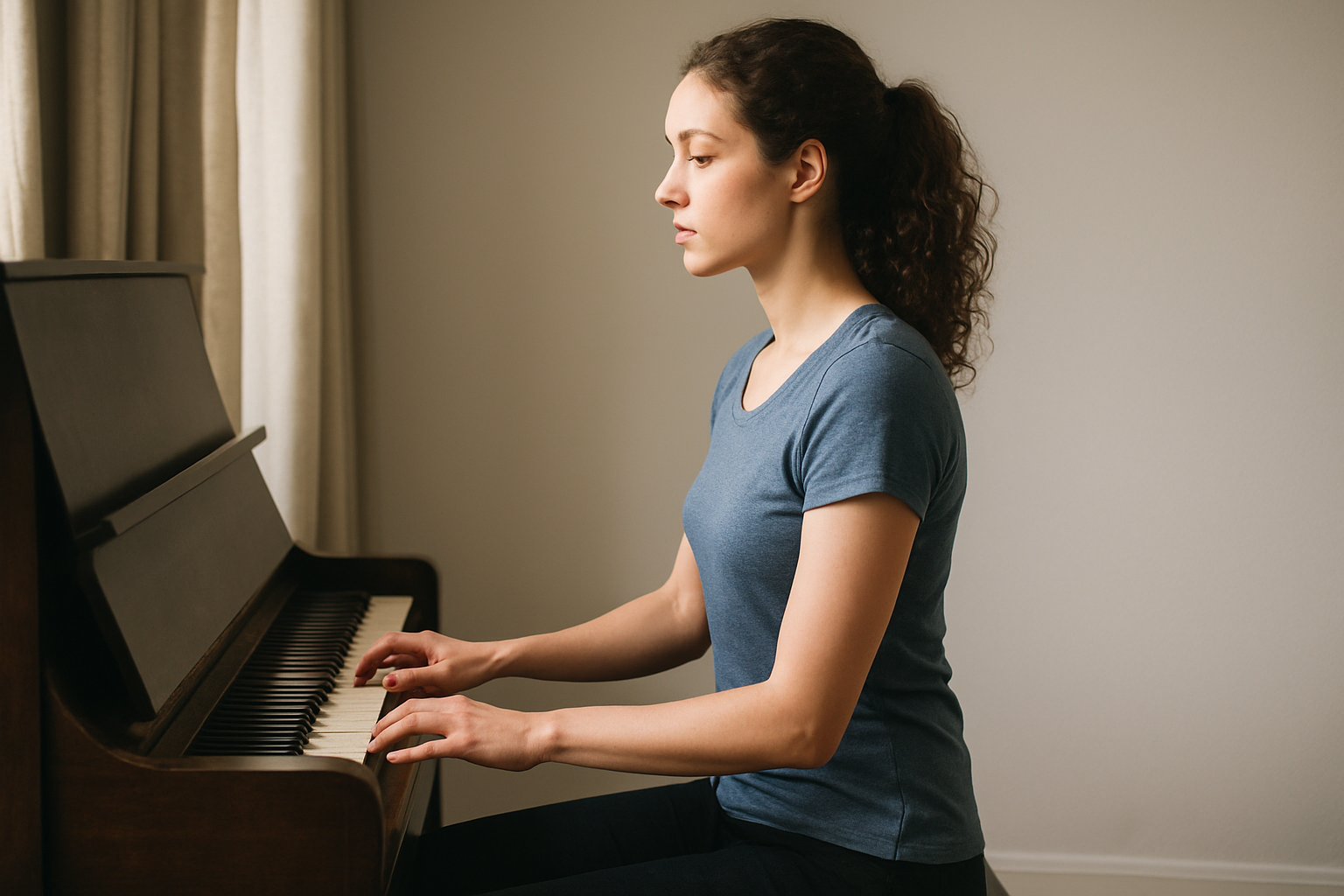When most beginners think about improving their musical skills, they focus on scales, chords, or songs. Yet one of the most overlooked elements of music practice is posture. How you sit, stand, or hold your instrument directly impacts sound quality, technique, endurance, and even long-term health. Poor posture creates tension that slows progress and increases the risk of injury, while good posture allows you to play with ease and confidence.
In this article, we’ll explore why posture is so important, the most common mistakes musicians make, and practical tips to develop healthy playing habits for every instrument.
Why Posture Matters in Music
1. Sound Production
Your body is part of your instrument. Good posture ensures your breathing, finger movements, and arm motions flow freely, producing clearer, stronger sound.
2. Technical Control
Without proper posture, technical movements become clumsy and inefficient. Correct alignment gives your muscles maximum freedom to move naturally.
3. Endurance
Musicians often practice for long periods. Poor posture leads to fatigue, while correct posture supports stamina and reduces strain.
4. Injury Prevention
Repeated practice with bad posture can cause injuries such as tendonitis, carpal tunnel syndrome, or back pain. Prevention is far easier than recovery.
5. Confidence and Stage Presence
Audiences notice posture. Standing tall or sitting with confidence not only improves your playing but also enhances your performance presence.
Common Posture Mistakes Among Musicians
- Slouching: Sitting with a curved spine restricts breathing and movement.
- Hunched shoulders: Creates tension in the neck and arms, limiting flexibility.
- Leaning into the instrument: Leads to uneven balance and strain.
- Locked knees (for standing players): Reduces circulation and causes fatigue.
- Unnatural wrist angles: Increases the risk of strain or injury.
These habits often develop unconsciously, especially when focusing intensely on music.
Posture Tips for Different Instruments
Piano
- Sit with feet flat on the ground, slightly forward on the bench.
- Keep elbows at or slightly above key height.
- Maintain relaxed shoulders and curved fingers.
- Avoid leaning forward excessively.
Guitar
- Sit upright with both feet on the ground.
- Use a footstool or strap for better instrument positioning.
- Keep wrists relaxed, avoiding extreme bends.
- Don’t hunch over to see the fretboard—lift the guitar slightly instead.
Violin/Viola
- Keep shoulders relaxed while supporting the instrument.
- Maintain a straight back and avoid tilting the head too much.
- Distribute weight evenly between feet when standing.
Wind Instruments
- Sit or stand tall to allow full lung capacity.
- Avoid collapsing the chest; keep ribcage open.
- Hold the instrument at a comfortable angle to reduce strain.
Drums
- Adjust the seat so hips are slightly above knee level.
- Keep shoulders relaxed while arms move freely.
- Place drums and cymbals at reachable angles to avoid overextension.
Singers
- Stand tall with shoulders relaxed and feet shoulder-width apart.
- Keep spine aligned and chest open for optimal breath support.
- Avoid raising or lowering the chin too much.
General Guidelines for Healthy Posture
- Neutral spine: Maintain natural curves of the back.
- Even weight distribution: Balance body evenly whether sitting or standing.
- Relaxation: Stay loose in shoulders, arms, and wrists.
- Awareness: Check your posture regularly during practice.
- Breaks: Stand, stretch, and move every 20–30 minutes.
Simple Exercises to Improve Posture
- Shoulder rolls: Loosen tension before playing.
- Neck stretches: Gently tilt head side to side to release stiffness.
- Back extensions: Stand up and reach arms overhead to counter slouching.
- Breathing exercises: Deep breaths expand the chest and remind you to stay upright.
- Mirror practice: Play in front of a mirror to observe and correct alignment.
The Role of Mindfulness in Posture
Mindfulness means staying aware of your body while playing. Many musicians lose posture when they become absorbed in the music. Regularly pause, breathe, and realign your body. Over time, good posture becomes natural.
How Posture Affects Mental State
Posture influences more than physical comfort—it also impacts mood and confidence. Sitting tall and open helps you feel more in control, while slouching can subconsciously reduce energy and focus. For performers, confident posture communicates assurance to the audience.
Common Myths About Posture
- “Posture must be rigid.” False—good posture is balanced and relaxed, not stiff.
- “Only professionals need to worry about posture.” Beginners benefit most by starting with good habits.
- “It doesn’t matter if I’m just practicing at home.” Every practice session reinforces habits, good or bad.
Long-Term Benefits of Good Posture
- Faster technical progress.
- Reduced risk of injury.
- More consistent tone and sound quality.
- Greater comfort during long practices.
- Increased confidence in performance.
Final Thoughts: Posture as the Foundation of Music
Posture might not seem as exciting as learning a new song, but it’s the foundation for everything else in music. By aligning your body correctly, you free your movements, protect your health, and set yourself up for long-term success.
Whether you play piano, guitar, violin, or simply sing, take posture seriously from the start. Check it often, practice awareness, and make small corrections daily. Over time, good posture becomes second nature—and your playing will thank you for it.
Remember: your body is your first instrument. Treat it well, and it will allow your music to flourish.
